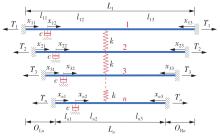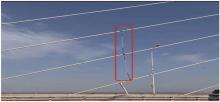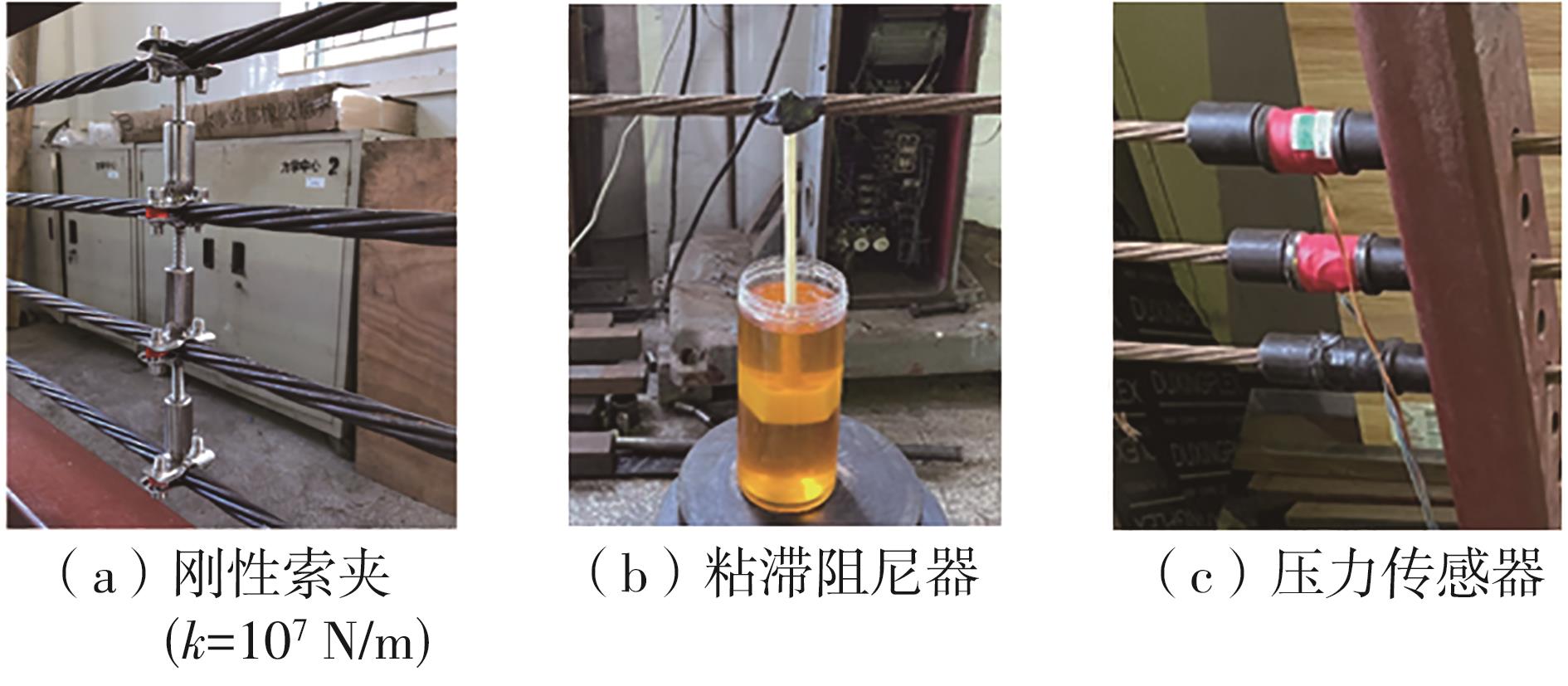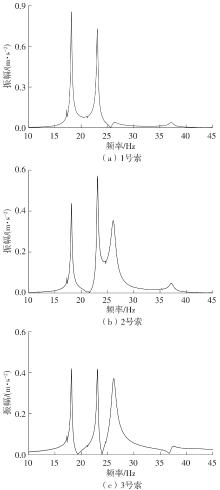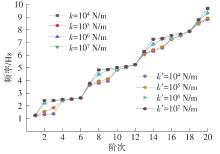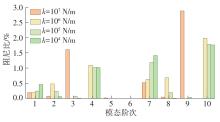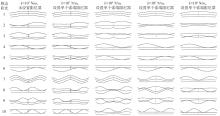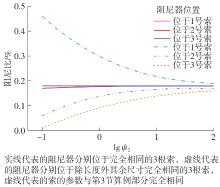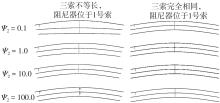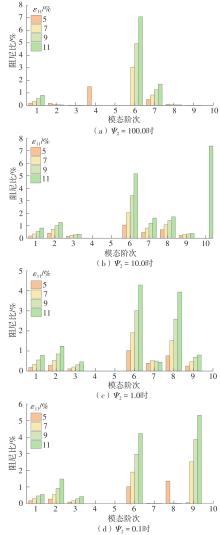| 1 |
刘志文,沈静思,陈政清,等 .斜拉索涡激振动气动控制措施试验研究[J].振动工程学报,2021,34(3):441-451.
|
|
LIU Zhi-wen, SHEN Jing-si, CHEN Zheng-qing,et al .Experimental study on aerodynamic control measures for vortex-induced vibration of stay-cable[J].Journal of Vibration Engineering,2021,34(3):441-451.
|
| 2 |
WANG H, TAO T, GAO Y,et al .Measurement of wind effects on a kilometer-level cable-stayed bridge during Typhoon Haikui[J].Journal of Structural Engineering,2018,144(9):04018142.
|
| 3 |
CHEN L, SUN L, XU Y,et al .A comparative study of multi-mode cable vibration control using viscous and viscoelastic dampers through field tests on the Sutong Bridge[J].Engineering Structures,2020,224:111226.
|
| 4 |
ZHOU H J, YANG X, PENG Y R,et al .Damping and frequency of twin-cables with a cross-link and a viscous damper[J].Smart Structures and Systems,2019,23(6):669-682.
|
| 5 |
李东超,赵海威,杨林 .大跨度斜拉桥施工期斜拉索减振技术研究及应用[J].世界桥梁,2021,49(3):91-96.
|
|
LI Dongchao, ZHAO Haiwei, YANG Lin .Research and application of vibration suppression techniques for stay cables of long-span cable-stayed bridge in construction stage[J].World Bridges,2021,49(3):91-96.
|
| 6 |
汪正兴,王波,柴小鹏 .大跨度斜拉桥斜拉索阻尼减振技术研究进展[J].桥梁建设,2015,45(3):13-19.
|
|
WANG Zheng-xing, WANG Bo, CHAI Xiao-peng .Research advancement of damping techniques for stay cables of long span cable-stayed bridges[J].Bridge Construction,2015,45(3):13-19.
|
| 7 |
黄继民,林志兴,项海帆 .大跨度斜拉桥中的辅助索减振研究[C]∥中国土木工程学会市政工程分会2000年学术年会论文集.西安:中国土木工程学会市政工程分会,2000:374-385.
|
| 8 |
AHMAD J .In-plane dynamic behavior of conventional and hybrid cable network systems on cable-stayed bridges[D].Windsor:University of Windsor,2016.
|
| 9 |
AHMAD J, CHENG S, GHRIB F .Combined effect of external damper and cross-tie on the modal response of hybrid two-cable networks[J].Journal of Sound and Vibration,2018,417:132-148.
|
| 10 |
CHEN W, ZHANG Z, ZHEN X,et al .Effect of bending stiffness on the in-plane free vibration characteristics of a cable network[J].Journal of Mechanical Science and Technology,2020,34(11):4439-4463.
|
| 11 |
李明阳,甄晓霞,陈炜,等 .大跨度斜拉桥辅助索对索网系统面内自由振动特性的影响研究[J].铁道标准设计,2022,66(2):54-60.
|
|
LI Mingyang, ZHEN Xiaoxia, CHEN Wei,et al .Effect of cross-ties on the in-plane free vibration characteristics of cable network of long-span cable-stayed bridges[J].Journal of Railway Standard Desgin,2022,66(2):54-60.
|
| 12 |
张卓杰,谷利雄,王东强,等 .刚性耦合对多索股结构自振特性的影响[J].铁道学报,2021,43(7):153-160.
|
|
ZHANG Zhuojie, GU Lixiong, WANG Dongqiang,et al .Influence of rigid coupling on natural vibration characteristics of multi-strand cables[J].Journal of the China Railway Society,2021,43(7):153-160.
|
| 13 |
周亚刚 .斜拉索-辅助索系统动力特性和减振研究[D].上海:同济大学,2007.
|
| 14 |
CARACOGLIA L, JONES N P .In-plane dynamic behavior of cable networks.Part 1:formulation and basic solutions[J].Journal of Sound and Vibration,2005,279(3):969-991.
|
| 15 |
CARACOGLIA L, JONES N P .Passive hybrid technique for the vibration mitigation of systems of interconnected stays[J].Journal of Sound and Vibration,2007,307(3):849-864.
|
| 16 |
冯立燕 .桥梁斜拉索-阻尼型索网减振体系研究[D].哈尔滨:哈尔滨工业大学,2012.
|
| 17 |
李建立 .桥梁斜拉索-阻尼型索网减振体系的有限元分析[D].哈尔滨:哈尔滨工业大学,2013.
|
| 18 |
周现宝 .形状记忆合金辅助索-拉索系统动力特性研究[D].深圳:深圳大学,2019.
|
| 19 |
单德山,董俊,刘昕玥,等 .具有减震器的吊杆施工期索力识别[J].中国公路学报,2015,28(8):31-39.
|
|
SHAN De-shan, DONG Jun, LIU Xin-yue,et al .Tension identification of suspender with damper under construction[J].China Journal of Highway and Transport,2015,28(8):31-39.
|
| 20 |
ZHOU H, ZHOU X, YAO G,et al .Free vibration of two taut cables interconnected by a damper[J].Structural Control and Health Monitoring,2019,26(10):2423
|
| 21 |
李寿英,曾庆宇,王世峰,等 .阻尼器对悬索桥双吊索减振效果的理论研究[J].工程力学,2018,35(3):186-192,226.
|
|
LI Shou-ying, ZENG Qing-yu, WANG Shi-feng,et al .Theoretical investigation for the effectiveness of the dampers installed between the hangers of suspension bridges[J].Engineering Mechanics,2018,35(3):186-192,226.
|
| 22 |
HAN F, DENG Z, DAN D .A unified method for in-plane vibration analysis of double-beam systems with translational springs[J].Journal of Sound and Vibration,2022,534:117042.
|
| 23 |
陈炜,王荣辉,周浩恩,等 .考虑抗弯刚度的耦合吊索自振特性研究[J].华南理工大学学报(自然科学版),2020,48(7):143-154.
|
|
CHEN Wei, WANG Ronghui, ZHOU Haoen,et al .Research on natural vibration characteristics of coupling hangers considering bending stiffness[J].Journal of South China University of Technology (Natural Science Edition),2020,48(7):143-154.
|
